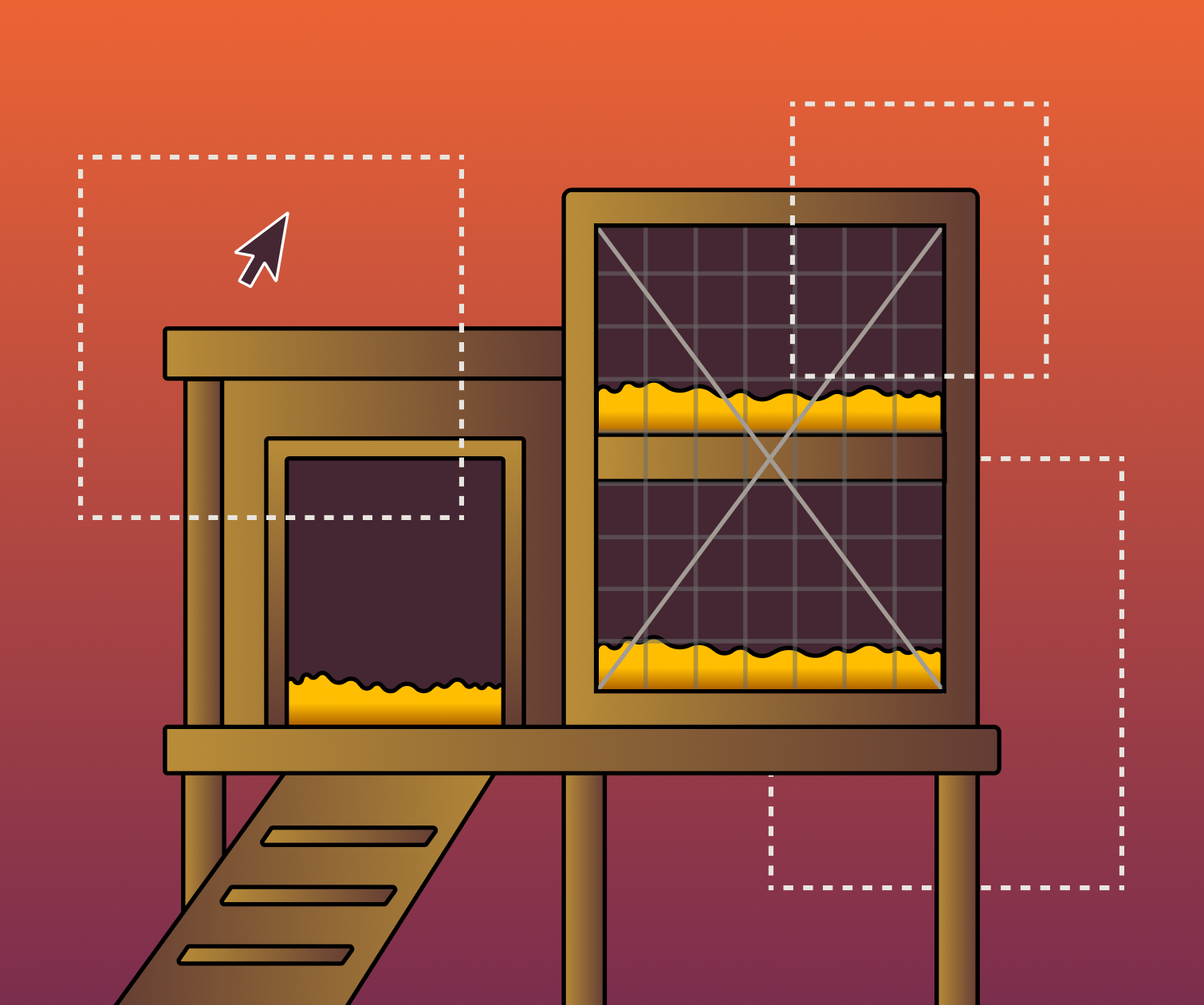
I would not call myself a homesteader, but I have begun to dip my toes into the world of raising chickens. I’m doing so together with my wife, and if I’m being honest, it has mostly been her passion project. She did all of the research and I have mostly just been along for the ride. But since I’m an insufferable software developer, I had to find a way to somehow relate the chicken-raising journey to software engineering.
So I’m going to talk about the construction of their home, and what I learned from building the chicken coop.
Why Is It So Hard to Build Something?
I’m not a very experienced carpenter. I only own a few tools, of which I only frequently use a small subset. So at the outset of the project, when my wife decided to draw up some chicken coop plans, it seemed… idealistic? You’re telling me that we’re going to draw the dimensions of this thing on paper, order the materials, and then actually build it? Why don’t we just buy a kit? Of course I kept these thoughts to myself. I didn’t want to be discouraging. And my wife was adamant that we build our own from scratch.
Early in the process, I began to experience a familiar sense of uncertainty.
“This is all a bit complicated, isn’t it? I don’t have the skills to build this. What if it doesn’t work? What if it all falls apart? What if it’s ugly? What are people going to think?”
Maybe you’ve felt like this before when trying to do a project. It’s uncomfortable to venture into the unknown! You might find yourself feeling ill-equipped and apprehensive, facing your own high expectations, and perhaps filled with a fear of failure.
So what did we do?
Well, eventually we just started working!
As we worked, we learned some new skills. Although we started with a hand saw, we eventually eased into some power tools. We learned how to safely use the circular saw. We refreshed our knowledge of geometry while framing the coop.
And as we continued to build, our confidence grew. Maybe we actually can do this.
We even started to get creative. The backdoor of the coop lifts up like the trunk of a car, and after some experimenting, we had the idea to use the long, wooden stick which keeps the backdoor locked as a support to hold the door up once it’s open!
Eventually, the coop was finished. It wasn’t perfect but we had a strong sense of accomplishment, and a safe, warm place for our chickens to live.
So what was the hardest part?
Well, it wasn’t the labor, or the carpentry skills, or the geometry, or anything of that sort. No, the hardest part was simply getting started. It was almost entirely mental. The first material purchase was scary, because we couldn’t really back out of it. There was money involved, and if we messed up, we’d have to eat that cost.
For me, these first steps are really difficult and very uncomfortable.
There is a temptation to take that uncomfortable feeling at the outset of a project and channel it into planning. How about we keep thinking about it? Make another drawing? Maybe we should 3D model this in sketchup or some CAD software? Are you sure that’s the right wood? But quickly, this turns into over-planning, which can be the end of a project.
Another direction I channel that anxiety is towards safety. Is this safe? Are we sure we know how to use the saw? Maybe we should just hire a professional.
Of course, some planning is good. And of course, safety is essential. But there is a balance to be found there. And from building the chicken coop, I learned that eventually, I just need to make the first cut.
Why Is It So Hard to Build Software?
As I thought about it more, this was not just about carpentry. I’ve seen the same challenges in software!
There’s the fear of failure, the imposter syndrome, the over-planning, and the impossibly high expectations—all of which might stop you from building the thing you want to build.
Am I sure I should build with this language, or framework? What if there’s a better way to do this? What if someone looks at this code and thinks it’s bad? Maybe I should write more documentation. What if it doesn’t look like how I envisioned it?
This is, to me, the most difficult thing about software development.
If you’re crippled by fear of imperfection, you’ll never be able to build anything. But if you do not have some sense of perfection, and some pride in your work, you’re probably going to write bad code. You should have confidence, but not too much confidence. You should write tests, but not too many tests. You should think about your tools and technologies, but you shouldn’t think about them too much.
At the end of the day, you’re going to have to make your first commit. Or your first push to production. Or whatever is the software equivalent to making your “first cut”.
It’s okay if someone looks at your code and thinks there’s a better way to do that. If you’re actually building software, that’s going to happen. The best thing you can do is just keep writing code, improving, and building confidence. That is the best tool towards combating imposter syndrome. And, hey, if you do it right, it might be you who looks back at your code and thinks there’s a better way to do that.
“It is not the critic who counts: not the man who points out how the strong man stumbles or where the doer of deeds could have done better. The credit belongs to the man who is actually in the arena, whose face is marred by dust and sweat and blood, who strives valiantly, who errs and comes up short again and again, because there is no effort without error or shortcoming, but who knows the great enthusiasms, the great devotions, who spends himself in a worthy cause; who, at the best, knows, in the end, the triumph of high achievement, and who, at the worst, if he fails, at least he fails while daring greatly, so that his place shall never be with those cold and timid souls who knew neither victory nor defeat.” – Theodore Roosevelt
The Last Ten Percent
One reality from the chicken coop building experience that I haven’t discussed yet is what I’ll refer to as “the last ten percent”. These were some of the final touches that would get us over the finish line.
Also, we had a bit of a time crunch. Our chicks, which were growing up in their brooder, were growing too big and would soon need to be transferred to their chicken coop. So we couldn’t take forever with this.
We were really confident with the build for the first ninety percent of the process. It looked even better than we had imagined. However—that all changed with the last ten percent.
My exemplary item to represent the struggle that was the last ten percent is the zip-tie.
We had installed sections of hardware cloth fencing that covered most of the chicken coop in order to keep predators out. We realized, as we were finishing up, that there were large gaps in between sections of wire. The solution? Zip-ties. We simply zip-tied the sections together. And while this worked, it was much uglier than we had hoped for. Where there were previously gaps, there were now little blue and pink and yellow plastic ties.
Now, we could still go back and remove them, and use some metal ties that matched the fenching, and that would certainly look better. Or if we could re-do the project, we might have had wider sections of fencing, or overlapped it more and not required as many ties.
There were a handful of other things, along with the zip-ties, that we ran into at the end of the build. We employed a few hacks to get to the finish like. And now when we look at our chicken coop, they stick out like a pig in a parlor. We can’t help but be reminded of our final short-comings.
There is a couple of things that I’ve taken away from this:
- A lot of the true craft happens in the final 10%
- Everything takes longer than you think it’s going to take—but especially the final 10%
- Kudos to those who are able to get through the finish-line gracefully
- The small details matter. A lot.
Why Is It So Hard to Do Literally Anything?
As I thought even more, about this, the chicken coop, software, why it’s so hard to build stuff… I realized this was not just about building stuff!
Recently, I’ve been going to the gym and experimenting a bit with lifting weights.
I don’t know… What if my squat form is bad? What if I get injured? What if someone sees me? What if this isn’t the best way to build muscle or get stronger? What if I can’t lift very much?
Now, don’t get me wrong. Good form is important and bad form can cause serious injury. But if fear of looking silly, or fear of having bad form, or fear of not lifting enough is holding you back from lifting at all, then that’s something you’re going to have to confront! And that’s where I’ve found myself many times.
Even as I write this, and I know I shouldn’t be embarrassed, and I know there’s no way to get better form or to get stronger without practice, I still prefer to lift in an empty gym, where I can play and experiment without fear of judgment.
For me, this play and experimentation is crucial to building confidence and being able to continue doing whatever it is that I’m doing. It’s playing, in a safe environment, that enables doing.
Many of the most prolific “makers” I know were able to experiment with carpentry, or whatever it is they make, during their youth. If you make a weird looking chicken coop as a kid, it’s okay because you’re young. If you make a weird looking chicken coop as an adult, you’re just a bad carpenter.
But, my point is, in almost everything there is an invisible forcefield around actually doing the things. And no matter how “simple” the thing is, actually doing it can involve overcoming some pretty serious mental hurdles. I speak in generalities, but you know what I mean.
The Doer’s Mindset
When I think of “doers”, a couple of friends, family members, acquaintances, and coworkers come to mind. These are people who just get stuff done. They make it seem like there are more hours in the day. They build furniture, renovate their bathrooms and kitchens, play pickleball, meet up with a friend, and somehow still have time to be in a band.
They aren’t over-complicators, or fluffy-talkers, or over-promisers. They’re simple. They think of something, they do it.
So here’s to all the doers out there. May we all be a bit more like you.
Loved the article? Hated it? Didn’t even read it?
We’d love to hear from you.




